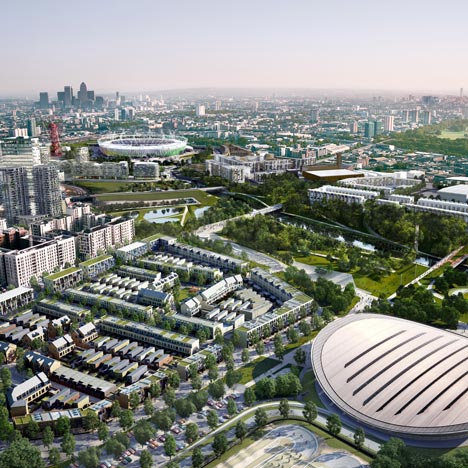News: architecture critic Rowan Moore has labelled Renzo Piano's Shard skyscraper as a "serious failure of planning" and described claims that the Olympics will regenerate east London as "bullsh*t".
Moore, architecture critic of the Observer, said the £12 billion spent on the London 2012 Olympics had created a "big buzz" but criticised the organisers of the games for justifying the cost by claiming they would regenerate east London.
"The deal with the Olympics ought to be really simple," Moore (above) told Dezeen during a filmed interview yesterday. "It’s this very big amazing event which, if it goes well, gives the host country a big buzz, as happened with the London Olympics, and for that you have to pay £12bn, or whatever the real cost is. And that’s almost the beginning and the end of it. If you wanted to regenerate east London there’d be much, much easier ways to do it than holding the Olympics, and much cheaper."
He added: "But the people who promote the Olympics find it hard to admit that. They say it’s about regeneration, it’s about boosting sporting legacy, it’s about boosting business, it’s sustainable. All these things are absolute bullshit."
Moore, former director of the Architecture Foundation and editor of Blueprint magazine, made the statements as part of a wide-ranging interview with Dezeen to coincide with the publication of his new book, Why We Build (below). The book explores the forces - including hope, power, money and sex - that drive the creation of architecture.
"On the Olympics site they’re going to build about 12,000 homes and I think they’re going to make about a similar number of jobs," Moore added. "If you’re really saying you have to hold the Olympic Games in order to achieve the equivalent of a middle-sized market town in east London, that’s just daft. That’s not how you go around regenerating things."
More than 11,000 homes will be built on the site of the Olympic Park in the next 20 years, according to plans set out by the London Legacy Development Corporation, with the first new development made up of apartments converted from the Athletes' Village.
Moore added: "I think they’ve done a better job than most previous Olympics, but it’s really up in the air what happens next. It could be a great model for how to improve areas. I mean, people in Stratford say it’s given them pride in the place, so that’s great. The big question is whether we get the usual housebuilders moving in and doing their usual product and essentially creating private enclaves."
Moore also discussed The Shard (above), the 300 metre high skyscraper by Italian architect Renzo Piano, which opened above London Bridge Station in July this year.
"The contribution of it to its immediate surroundings is pretty minimal," Moore said. "You can be ten feet away from The Shard and if you’re looking away from it you wouldn’t know it was there.
"The Shard is clearly an icon, and it is very clearly a product of the last 10 years, in that it is by a famous architect, it’s a striking shape, it’s funded by Qatari money, it’s the sort of speculative building that was made possible by a planning culture in London that was very developer-friendly, very much about attracting investment."
Moore criticised the way the tower fails to interact with, or benefit, the surrounding area. "[It] is sort of amazing, and a serious failure of planning, that you could put that much investment into a place and not have a positive idea about what the whole place is going to be."
In an interview Dezeen published with Renzo Piano earlier this year, the architect claimed The Shard was designed to be "quite gentle". "I don’t think arrogance will be a character of this building," said Piano. "I think its presence will be quite subtle. Sharp but subtle."
Despite its failings, Moore admits the skyscraper has already become a popular addition to the skyline. "The principles behind it are all wrong, but it has captured people’s imagination and it has become part of the mental furniture of London in a way that I think is positive," he said.
"Also The Shard just proves that this stuff is going to go on forever – we’re always going to have Shards, always going to have Burj Khalifas, always going to have Chrysler Buildings, so there’s always going to be big money and it’s always going to build big buildings."
You can read an extract from Moore's new book, Why We Build, in our story published last month. The story also contains details of a competition to win a copy of the book, which closes tomorrow. A movie and transcript of the interview with Moore will be available soon.
Moore told Dezeen that the book explores "the interaction between architecture and human emotions and desires" and the failure of architects to understand how people actually inhabit buildings, and also draws attention to those architects who Moore believes "allow people to finish the story" of a building, such as the Brazilian modernist Lina Bo Bardi.
Dezeen's coverage of The Shard includes an interview with Renzo Piano and a movie of the building's construction.
Our London 2012 Olympics coverage includes Olympic architecture, Thomas Heatherwick's Olympic cauldron, reports on Paralympic design and our own medals for the best loved Olympic designs.

